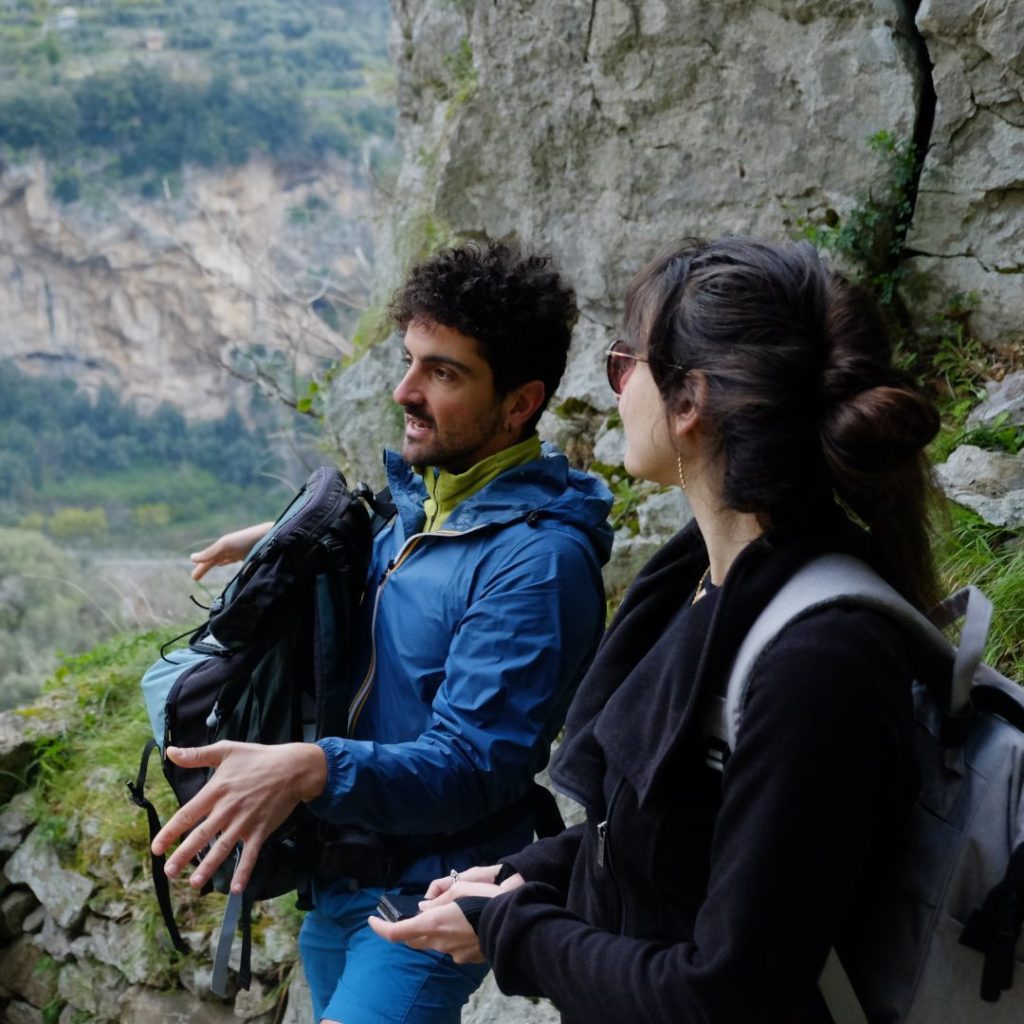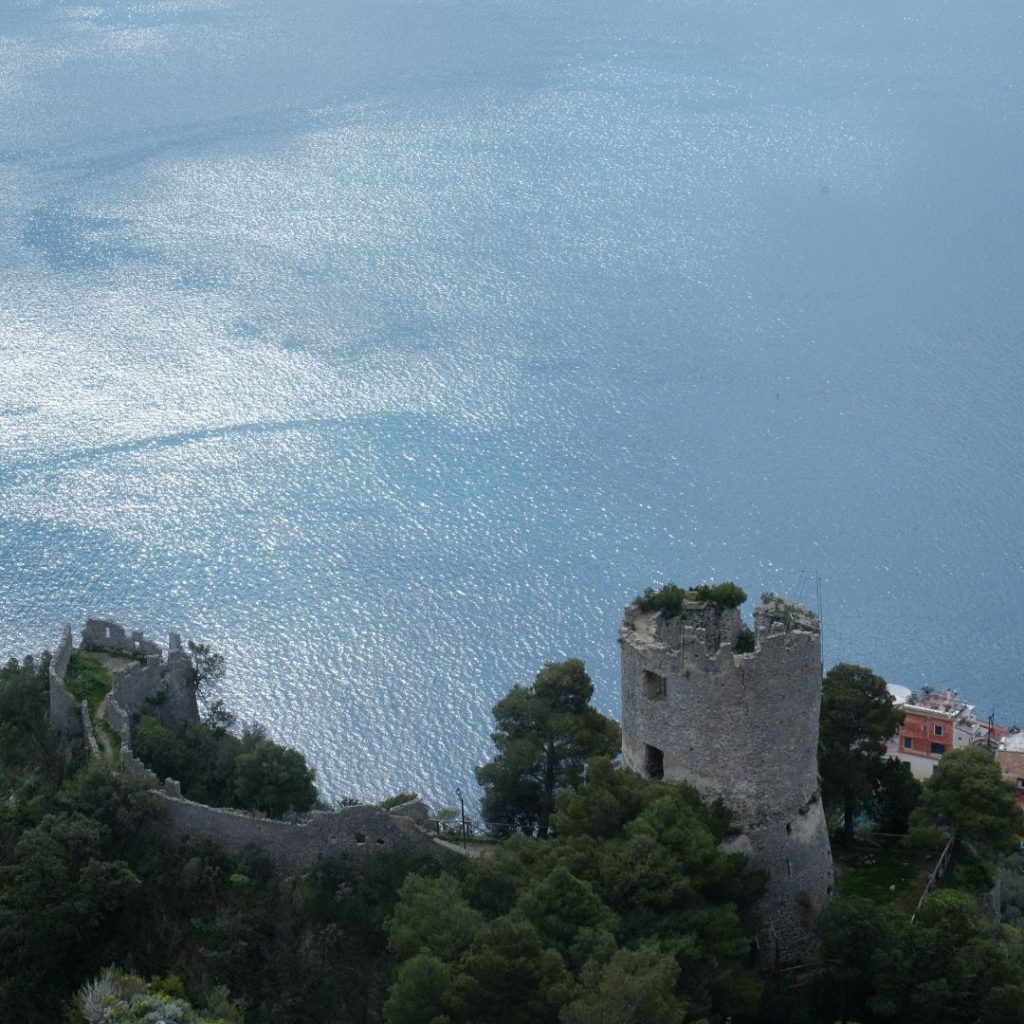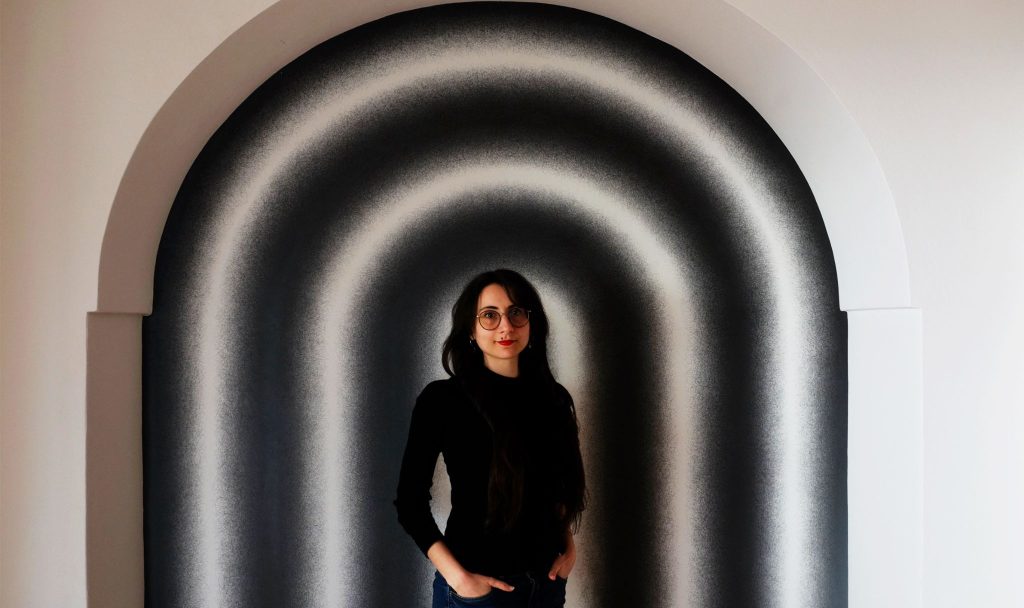
During her two-week stay on the Amalfi coast and in Campania, Julie worked on her second novel entitled "La Madone brûlée" (The Burnt Madonna), an immersion in Campania and Neapolitan popular culture, with its dramas, madonnas, sacred and profane at the same time, through the leitmotif and narrative of the game of tombola.
As in a mirror in which the sun, the sea, parties, violence, Masses, and fireworks are reflected, Julie will recount the taboos and syncretism of the Mediterranean and the magical culture of Southern Italy and Naples. Through writing, she will retrace her symbolic and cultural density, focusing on the role of women and the image of the Madonna, with all her ambivalences and ambiguities. Let's dig deeper into the search.
The permanence and artistic research between the city of Naples and the territory of the Amalfi coast have allowed Julie to gather the sources necessary to tell a story whose desire is to penetrate the depths of a culture: starting from those of families, with their taboos and their secrets.
The narration of the Madone brûlée is deeply anchored and, at the same time, animated by the notion of"hantise", that haunting presence of thoughts, of memory which, when the past is not managed, takes the form of constant torment, as if it were a ghost. In this idea of the past, of memory, of transmission, memory assumes a continuous presence to the point of distorting reality.
«My father was born in Naples. For my story, it was essential to retrace the return of a character who, in the novel, will be called Nino. After fifteen years spent in France, he returns to his hometown, near Naples, to relive the dramas of his childhood, re-weaving the threads of his personal story and his initiation to dust and to work as a firework seller.
On the periphery of his story is a young woman who, at a certain point in the novel, will descend, like a ghost, down the stairs of the fountain in the town square with her dog. While everyone lives and enjoys the party, she will remain suspended, motionless, in the center of the court while her dog starts howling. She will be the Madonna brulée».
Tombola is the Neapolitan alphabet
The literary project of "La Madone brûlée" draws inspiration from the popular tradition of Neapolitan tombola. Through numbers and their meanings, Julie gives life to a world where religious and classical figures intersect with more popular and sensual characters.
«Using tombola as a narrative structure and alphabet of Neapolitanism allows me to go beyond the Catholic canon of the Madonna understood in her Marian dimension to investigate the powerful pagan roots of her cult,»- Julie tells us.
La Madone brûlée, in fact, intends to retrace and investigate «the unsaid of a culture that loves to contrast the virgin with the whore. Because, in the end, what defines women's virginity? Downcast eyes, their silences, perhaps their blood? Or the blinding of men and their violence towards all that resists them? To understand this, we must reveal what is most secret in families, such as hidden in the shadow of religions".
The reference to fire in the title «is not pure provocation but recalls an omnipresent element in history, not only for the link with Naples, Vesuvius, and all its past.
It is a fire conceived in its pre-Socratic essence; it is a fire that illuminates, which allows you to redefine outlines and concepts. When it reaches its maximum intensity, it is a fire that burns, melts, and unites. Therefore, saying that the Madonna is burned is also an alchemical promise of renewal and redefinition of beings, forms, and identities».
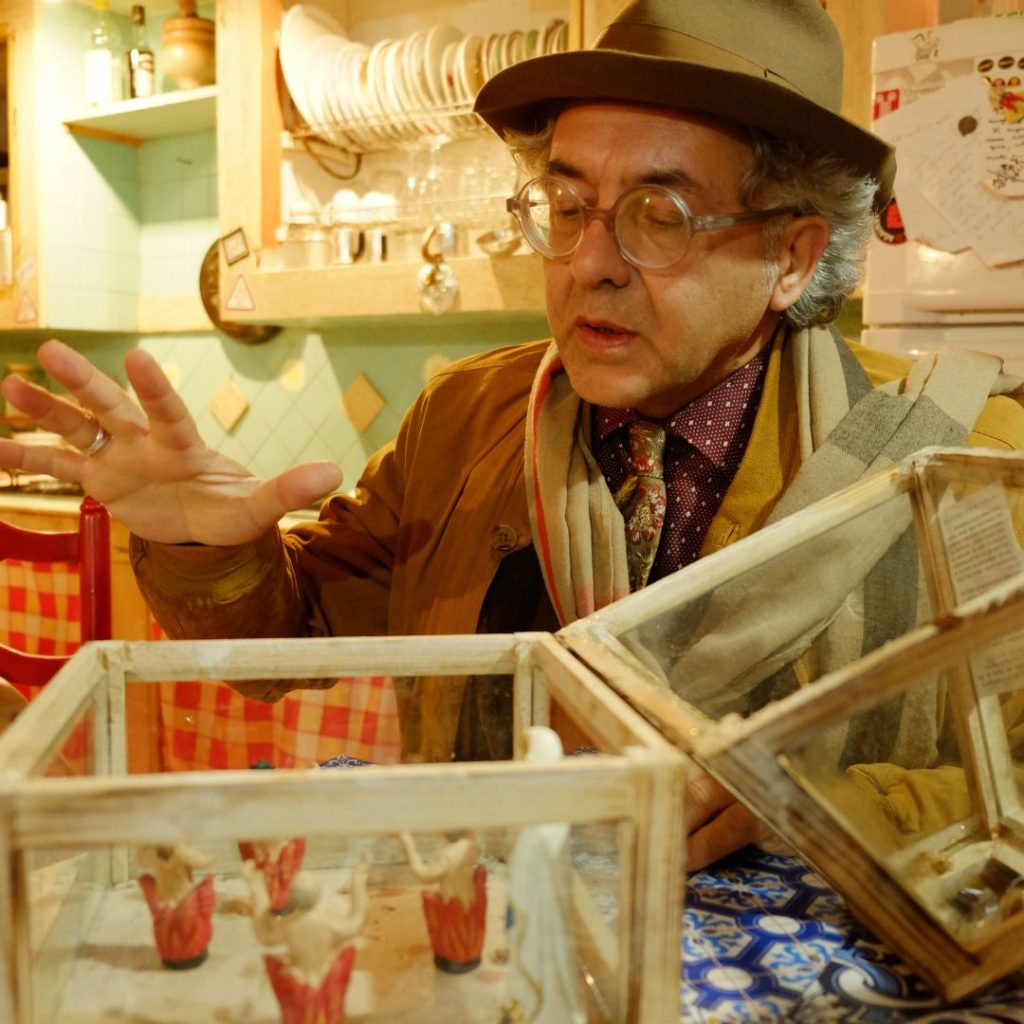
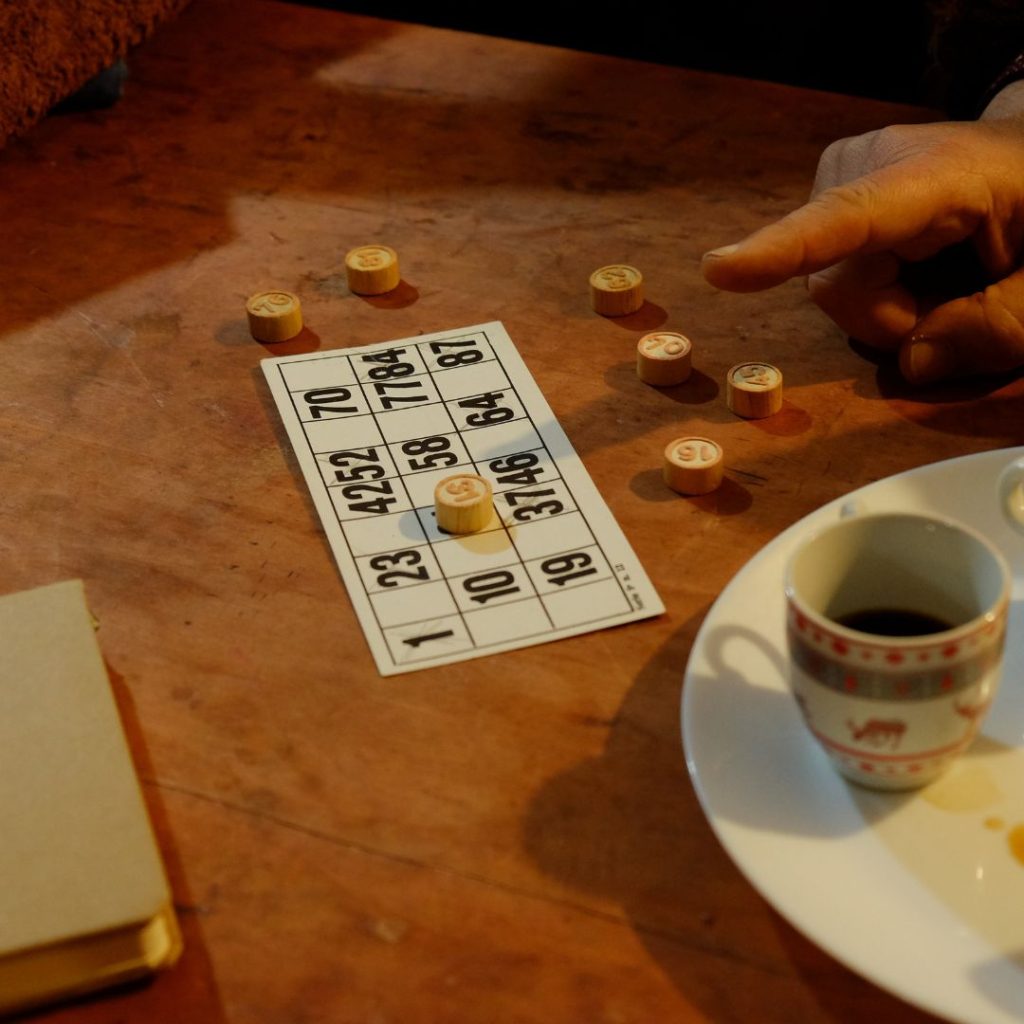
Investigating the discourse of femininity in its polymorphic dimension, we went to Torre Annunziata to meet the femminella CiroCiretta Cascina, historian, performer, and profound connoisseur of Campania and Neapolitan popular culture.
With Ciro Ciretta, port, and gateway between the visible and the invisible and guardian of Neapolitan style and all its immeasurable wealth, Julie delved into the history of tombola, whose social and cultural legacy is still carried on today by the femminéllə, an ancient figure of the popular culture of Naples and historically anchored in the social fabric of the city.
Having the masculine and the feminine in themselves, lə femminéllə have always been representatives of plural femininity. Ciro Ciretta gives us an idea: «In ancient times, there were children who extracted the number from the tombola Panaro because they represented the purest part of society, mediated between the sacred and the profane. Over time, this task has passed us femmeniéllə: having the coexistence of genders in us, in reading the number drawn, there is no interest in favoring the masculine or the feminine».
Furthermore, the cult of the Seven Madonnas is linked to the figure of the femminéllə, notably the Madonna of Montevergine, the so-called Mamma Schiavona, protector of queer communities, in a unique syncretism between Catholic tradition and pagan and popular heritage.
CiroCiretta: «When I arrived very young in Montevergine, it was a shock because Montevergine is sitting on the throne, imperious. I realized then that the sacred cannot be a definitive concept and has nothing to do with the concept of purity. Nothing sacred can be completely pure."
The documentary film "Summer Within" and The Madonna of Montevergine
As we searched through the different forms of femininity in Neapolitan and Campania culture, we let ourselves be crossed by the song of Partenope. A breath of sea and life that led us to unexpected people, places, and stories. And that's where a beautiful meeting happened: the one with Summer Minerva (they/she). Independent researcher, multidisciplinary artist, actor, and educator of Italian-American origins, Summer deals with research related to gender fluidity in the context of the Neapolitan popular tradition and other cultures, near and far.
Together with the French writer, we attended the presentation of the autobiographical film "Summer Within," which searches for the belonging of the Italian-American artist by investigating her southern roots; through the bond with her grandmother and the deep immersion in the city of Naples, with its rhythms and rituals, Summer comes to recognize herself in the popular culture of femminella, the third gender of Campania.
Summer: «Lə femminéllə, for me, represents my gender - the body of a man, the soul of a woman. My spiritual journey, work as an artist and as a performer, and curiosity for the popular traditions of Southern Italy have accompanied me on a journey toward the Black Madonna; one of the Madonnas was Mamma Schiavona.
On my first trip here, however, I knew nothing of the significance of this Black Madonna, especially for the queer community. I didn't know her story when she sheltered two homosexual men caught making love and left to die on a cold winter night.
The Summer of my adolescence would have found comfort in meeting Mamma Schiavona and knowing that in my ancestral culture, it is not only acceptable to be neither man nor woman, honoring gods and goddesses, not despite my gender identity, but because of it. May Mamma Schiavona support and bless the expression of who I am in the world».
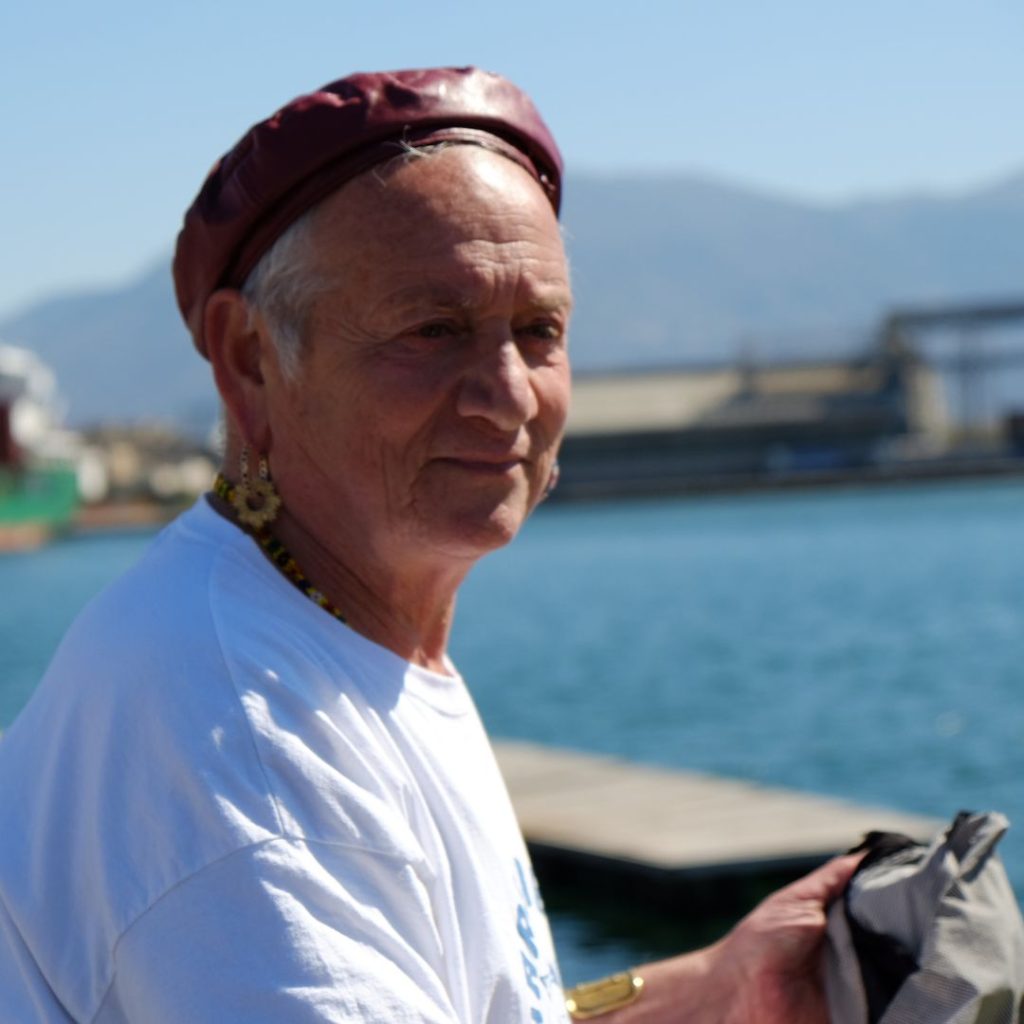
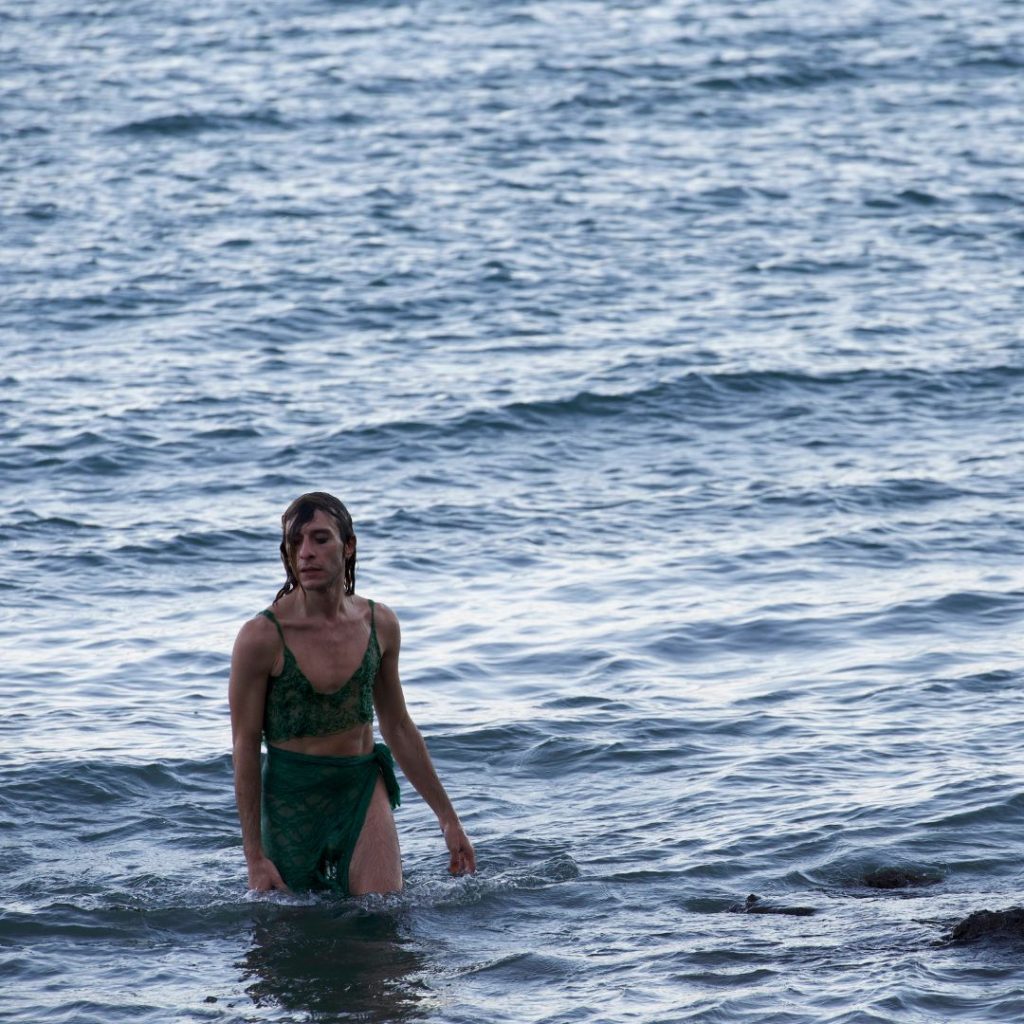
The meeting with O' Capitano and Perzechella in Vico Pazzariello
To learn more about the game of tombola, understood by Julie as the Neapolitan alphabet, we entered the belly of Naples and, more precisely, Vico Pazzariello, a space where art, theatre, music, and life meet and mingle with the aromas of coffee and the rhythms of the Tammorra.
Here we were welcomed by Angelo Picone, O' Capitano, and Giuseppina Andelora, Perzechella, creator of this unique place, a point of reference for the Neapolitan people for years. O'Capitano, who works as 'o pazzariello,' a widespread figure in Naples in the 18th and 19th centuries, still recognizable today by his whimsical clothes, often in full Bourbon-inspired uniform, made Julie live the tombola experience.
Julie: «Captain and Perzechella are characters who embody the Neapolitan spirit through the knowledge and transmission of this culture that they help to create. Starting from the number drawn, O' Capitano began a story. The door of their house/theater was open, and as the game progressed, people who happened to be there by chance were added around us, helping to build the narrative thread.
It was nice to see how all the stories in the world can be born from numbers. That afternoon in Vico Pazzariello, a collective tale was born, created from the creativity of the people who passed by.
This could be one of the most beautiful metaphors of literature: letting a story intertwine on the edge of chance, allowing everyone to create it, and telling something about themselves.
My novel will be set in Naples because its generosity and density can give voice to universal situations and characters».
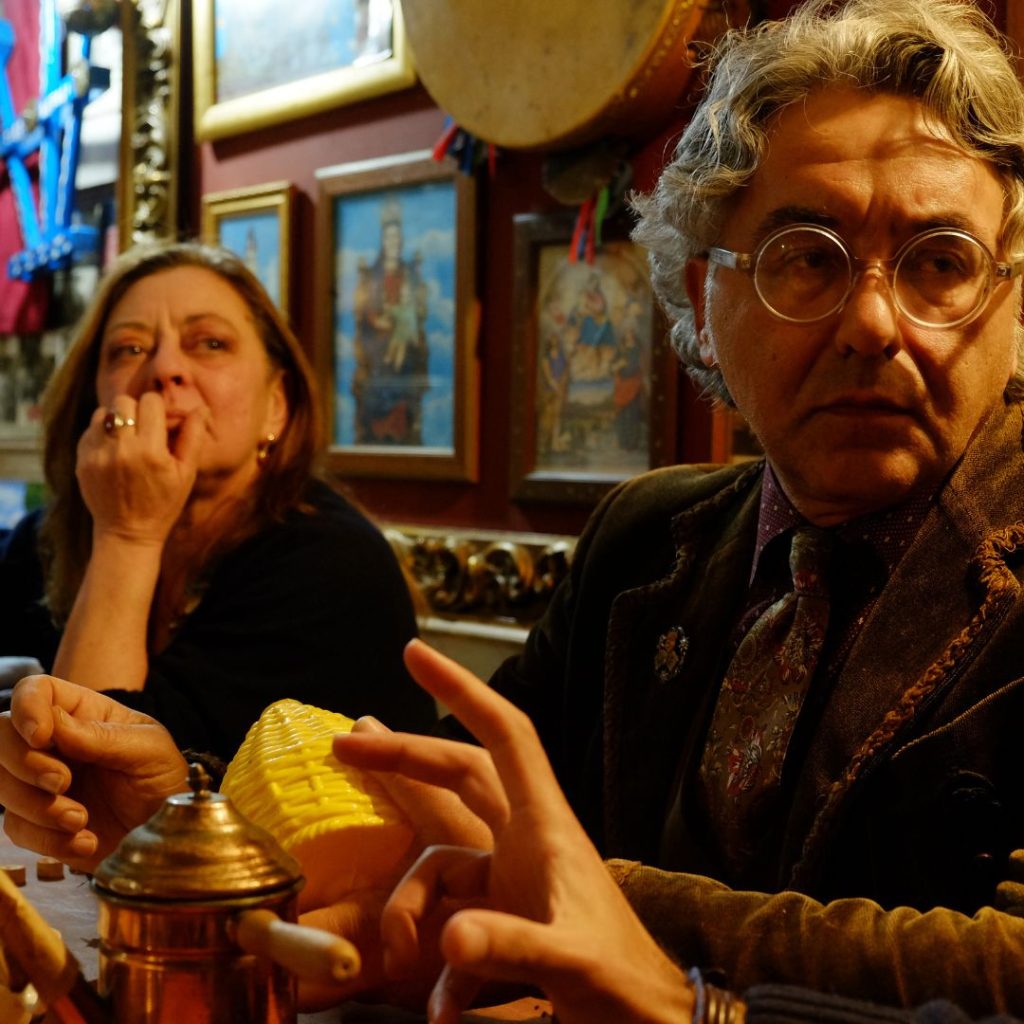
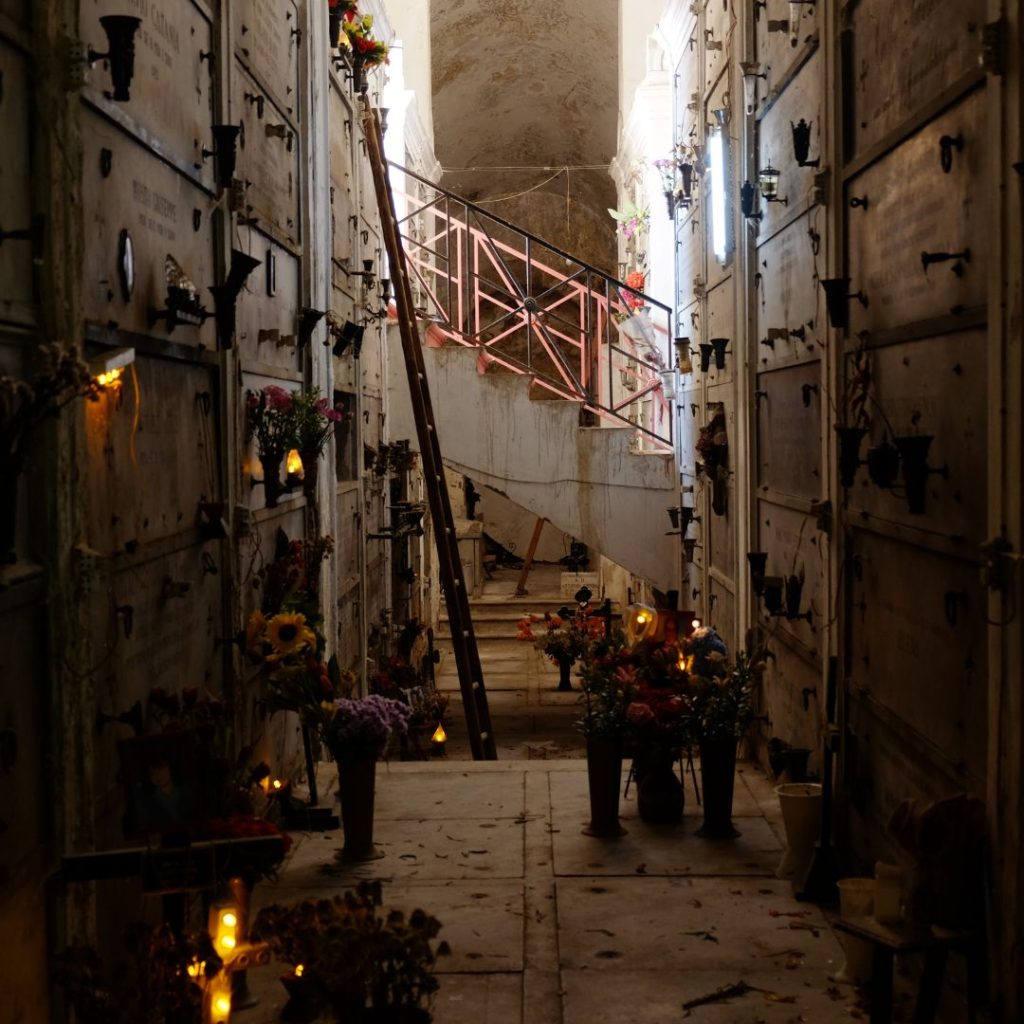
The Poggioreale cemetery: a door between visible and invisible
The novel "La Madone brûlée" will also investigate the unique and peculiar relationship that the Neapolitans have with death and with the invisible. For this reason, we went to the monumental cemetery of Poggioreale, the largest cemetery in Naples and among the largest in Europe.
Julie tells us about the experience: «I go to the site with Imma and Roberto with the idea of collecting impressions useful for work, but very soon one feels overwhelmed by the strange monumentality of the place, the photos, the smell, the myriad of names that ooze from the marble, the vertical tombs, the stairs for those who want to light candles, the chairs left empty in the semi-darkness.
Strolling around risks getting lost in this upside-down world where the dead are buried high up. Let's take some photos for the archive. Quickly. Because soon, a form of restlessness and recollection takes hold.
At the exit, one shakes and spits to eliminate this unusual taste in the mouth.
The day continues in the tumult of the city, the other, that of the living this time, and one thinks one has detached oneself from the place, from the overturned earth. And then, looking at the photos again, you discover your last name on a grave. RUOCCO. 6 letters in marble and the confirmation that I somehow come from here».
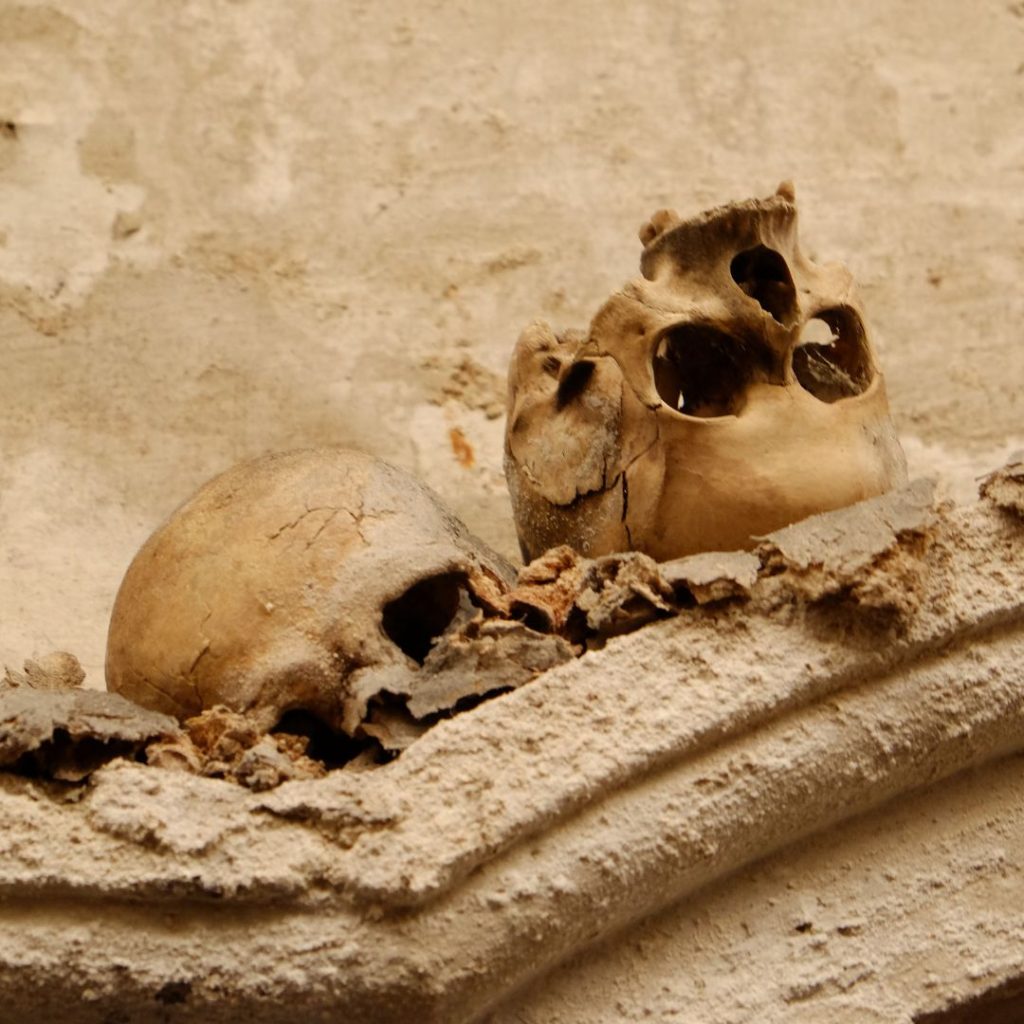
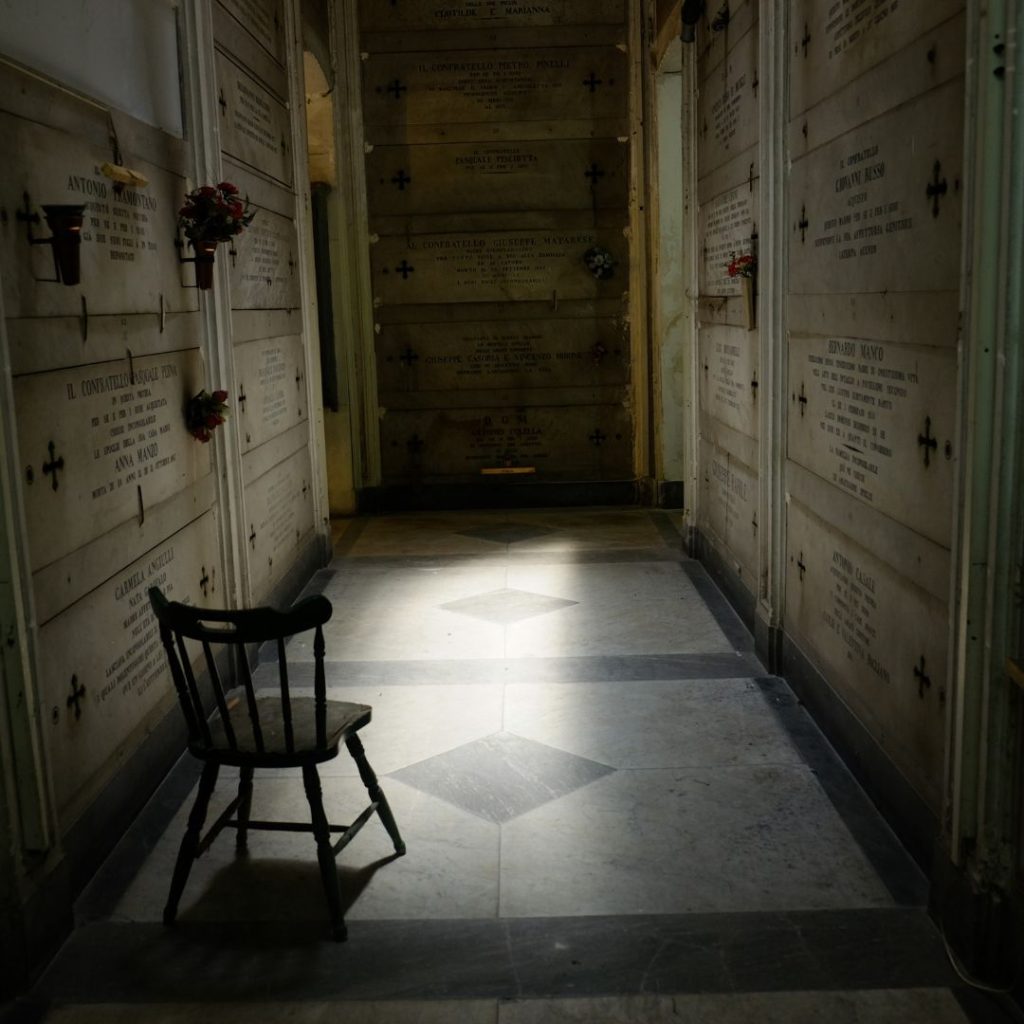
Santa Maria delle Anime del Purgatorio ad Arco and Santa Luciella ai Librai
Searching through religious practices and ancient rites in a profound syncretism between the sacred and the profane, we took a trip to the churches of Santa Maria delle Anime del Purgatorio in Arco and Santa Luciella ai Librai in Naples.
«In Naples, the deceased are unsatisfied with being remembered through a photo worn as a necklace or posted on the walls. They breathe behind the living, walk in their dreams and inhabit the earth under their footsteps».
Thus we entered the teeming underground of the city, made up of shrines, ex-votos, and never buried bones, and we deepened the cult of the souls in Purgatory, or 'pezzentelle' souls, to whom we turned to ask for a pardon.
For centuries and until the 1970s, the custom of adopting the so-called 'capuzzelle,' anonymous and abandoned skulls that belonged to people who had not been buried, was, in fact, widespread in Naples.
Deprived of Christian rites, these souls were condemned to spend eternity in the flames of Purgatory unless a person took care of them, giving them relief and refreshment, or 'refrische.'
Once a skull was chosen, it was cleaned and polished, sometimes placed on an embroidered cushion, and brought a coin, a rosary, and some alcohol as a gift. The more the capuzzella was able to respond to requests, the more its reliquary was enriched with flowers, candles, and goods of every luster.
«People who make the skulls flourish in the basement of Naples. What moved me is this popular solidarity that transcends the line between life and death. Dead and mortals take care of each other because suffering makes everyone indebted. Grace to the dead, memory to the living."
